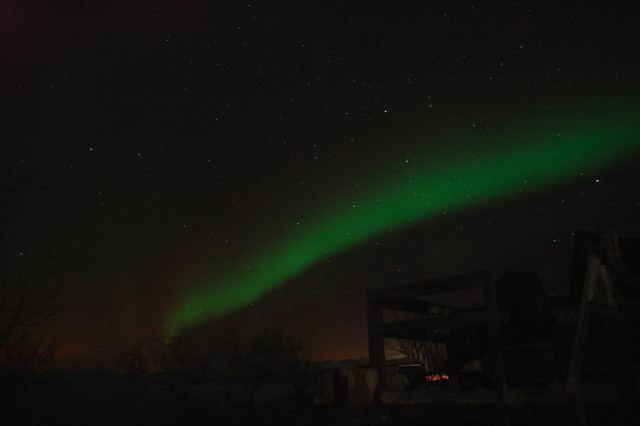Sodankylä Geophysical Observatory |
Last update: 2019-07-05, 07:28:11 UTC.
HotPay2 was launched on 31st January 2008, 1914 UTC! |
|---|
HotPay II was succesfully launched into a decaying auroral arc at 19:14 UTC on 31st January 2008! Already at daytime the magnetometers showed that we hit the expected solar wind stream due to the coronal hole and we could expect perfect science conditions for the launch. The weather was a bit variable, but stars were visible in same direction above Andoya all the time. The Na lidar was not operational when the countdown started at 16:00 UTC. During the first hour we saw the stretching of the oval from the north, nearer and nearer to the rocket trajectory and impact area. Then the arc brightened just above Andoya. Countdown was held at -30 mins and the emission weakend, the arc moved northward, and we had perfect launch conditions. Except that the Na lidar was not operational and we did not know about the Na layer. Countdown was only very shortly on hold at -12mins when the Na layer appeared on our screen at the User's Science Operation Centre. HotPayII PI John Plane proposed continuing countdown and everyone, including me, nocked. There was an option to hold at -3 mins, but the decision at -12 mins was to GO. I went out to try to catch some photos. However, the brightness of the ignition surprised me and I did not get any fancy pictures, but there some pictures available by the more experienced staff at ARR (link below).

Target aurora arc seen from Kilpisjärvi during the rocket flight. (c) Tero Raita, SGO.
Our NEMI photometers sent good data, but the Na photometers failed at the time of the ignition of the 2nd stage. Martin Friedrich's Faraday rotation worked as expected, there are some spikes occasionally which might be evidence of arching in the HV section of the failing Na photometers, but this is not known at the moment before further analysis. The French AC magnetometer got saturated (too much signal), all other instruments seemed to give good data. Except the dust detector, which stopped when the nose cone was released. The PEEL instrument did not see much, of course, because the emission at 427 nm was not at all strong and there were not really hard particles in the precipitation.
Story of launch and pictures are now at ARR web pages: http://www.rocketrange.no/


